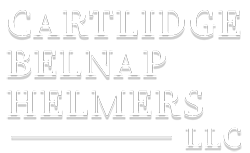The Affordable Care Act has made some significant changes in how we file our taxes. For some it could be as simple as checking a box, for others it could mean additional forms to fill out. Depending on whom you obtained your health insurance from and when you got the health insurance can make a difference in how you file your taxes and what may occur. Here are some scenarios particular to you and what you may need for this tax season.
IF YOU RECEIVED HEALTH COVERAGE FROM EMPLOYER OR GOVERNMENT PROGRAM (MEDICARE, MEDICADE, ETC.)
For more than 8 in 10 it will be as easy as checking a box on your 1040 attesting that you have health coverage. You must also make sure that everyone in the household is covered including those who have different insurance than you. All it takes is a checked box on line 61 attesting that you had health coverage for the full year of 2014.
IF YOU RECEIVED HEALTH COVERAGE FROM AN OBAMACARE EXCHANGE AND GOT TAX CREDITS
First of all, you will need the 1095-A form which will be sent to you by the health insurance exchange in which you purchased it from. This should’ve arrived to you by now but you can also download it from the exchange website. This is essentially your proof of insurance which will show what your total insurance premium was and how large a tax credit you got each month you were covered. The information from the 1095-A is then used to fill out another form called the 8962.
The 8962 is to ensure you got the right amount of assistance for your health coverage. When you applied for credit, you told the exchange what your estimated income would be in 2014. That estimated income number was then used to calculate your subsidy. When you file your 8962 with your taxes you are showing what you really made. If your amounts are different, then your tax credits will be adjusted. This means your return may be higher or lower based off of your estimates.
PRIVATE HEALTH INSURANCE THAT ISN’T FROM GOVERNMENT OR JOB
If you didn’t use the health care exchange and didn’t receive any tax credits, all you need to do is check that line 61 on your 1040, as discussed earlier. If you purchased an unsubsidized plan from the exchange you will still receive a 1095-A and you will still need to report that insurance on your 8962.
If you were someone that did use the exchange and purchased an unsubsidized plan you can still apply for tax credits. To be eligible you would have had to have made less than $46,680 for a single person and $95,400 for a family of four.
IF YOU DON’T HAVE HEALTH INSURANCE
If you don’t have a health insurance you may be subject to a tax penalty depending on your income. The penalty formula is complicated but it starts at $95 and goes all the way up to $11,000. If you are a single person under 65 and made less than $10,150 then you will not have to file taxes and the healthcare mandate does not apply to you. Now there are tons of exemptions for those who did not have health coverage but you need to apply for them and document that in your 8965. The Affordable Care Act states that insurance is affordable if insurance cost 8% of your income. If insurance was available to you below that price then you’ll have to pay a penalty.
If you really couldn’t find affordable coverage then you are exempt. There are plenty of hardship exemptions to claim like a bankruptcy, eviction, religion, etc. You can still file your taxes and claim those exemptions while waiting to hear from the exchange if you are exempt or not.




